The high-flying Spaceship Neptune will transport passengers to the edge of space
As Space Perspective gears up for its first launch, Spaceship Neptune looks set to become the most popular route to the stratosphere
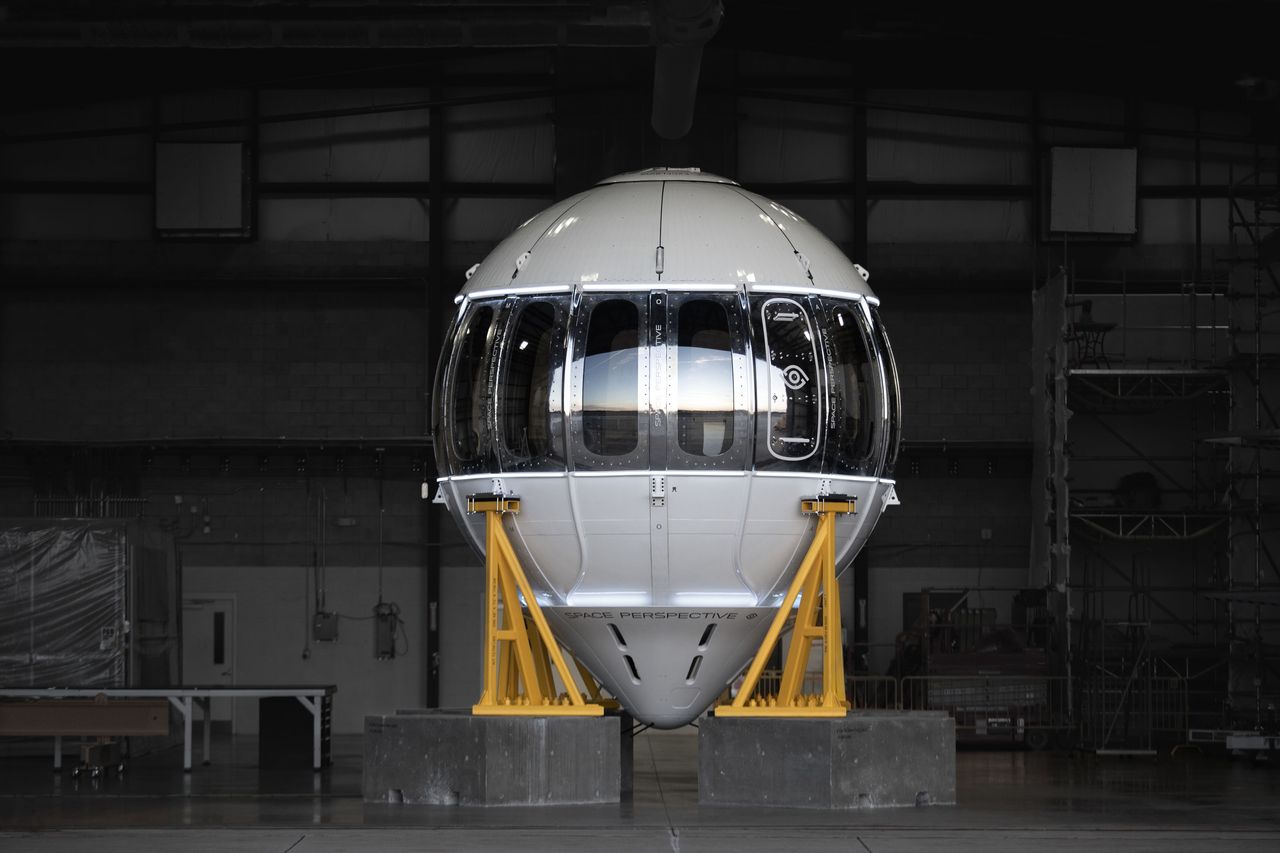
There’s a sub-orbital space race underway right now, with several companies vying to be the first to use a stratospheric balloon to lift paying passengers to the very edge of space. We’ve previously reported on HALO’s Aurora space capsule, and now it’s the turn of Space Perspective, a Florida-based firm that describes itself as a ‘high-altitude flight tourism company’.
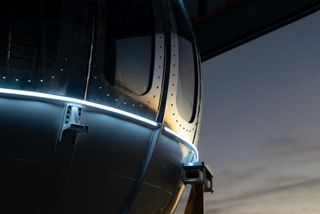
Set up in 2019 by Jane Poynter and Taber MacCallum, the outfit recently unveiled its new Spaceship Neptune capsule, a nine-seater craft designed to lift a crew of nine into the upper stratosphere, slung beneath a hydrogen balloon. We spoke to Poynter and Dan Window, Neptune’s designer, about the preparations for the first flight.
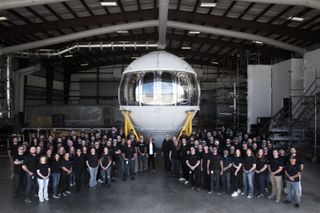
The Space Perspective team
‘I’ve been in the human space flight business for over 30 years,’ says Poynter. Her remarkable CV includes a stint as a crew member on the ill-fated Biosphere 2 research centre in Arizona, as well as co-founding a company to supply technology to NASA and ESA, Paragon Space Development. Space Perspective is getting close to uncrewed test flights, with the first commercial ventures starting next year. ‘It’s all about taking people into space in a way that is completely accessible,’ she explains, pointing out that passengers need no training, experience no high G-forces and no discomfort.

‘We’re completely focused on using a zero pressure balloon for space travel,’ Poynter says, pointing out that Paragon supported Alan Eustace’s record-breaking parachute jump from a ballon at over 135,000 feet. This altitude – over 25 miles into the stratosphere – is somewhat higher than the operating window for Space Perspective, which should top out at around 100,000 feet (circa 19 miles). For comparison, Concorde’s maximum altitude was 60,000 feet.
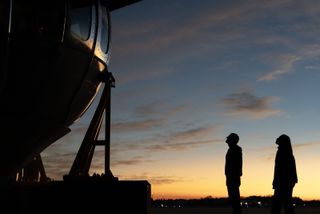
Spaceship Neptune will be the vessel for this leisurely journey to a new perspective. ‘It’s the antithesis of a rocketship,’ says Poynter, ‘we will go to space at around 12 miles an hour, taking 2 hours to get up, 2 hours at altitude, then a 2 hour descent.’ That 2 hour observation window is the company’s USP – in comparison, a company like Blue Origin offers around 12 minutes of flight time.
Even that is enough to experience the ‘overview effect,’ the much-vaunted sensory shift reported by many astronauts as they take in the vast panorama of Earth from space. ‘This is primarily about the view,’ Poynter admits, ‘It’s a shared moment, something we call the space perspective.’
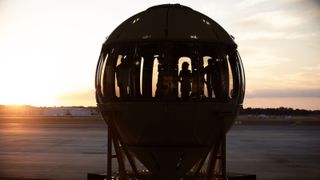
To that end, Spaceship Neptune is not a cramped tin can but a ‘space lounge’ with large windows, comfortable chairs and even space to move around and change your viewpoint. Weighing around 6,500kg fully loaded, with eight passengers and one captain, Neptune was shaped by transportation designer Dan Window. After working on aviation and train interiors at PriestmanGoode, Window set up OMI (Of My Imagination) with fellow designer Isabella Trani.
Wallpaper* Newsletter
Receive our daily digest of inspiration, escapism and design stories from around the world direct to your inbox.
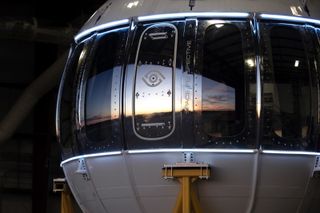
Window is also Head of Experience Design at Space Experience, and Neptune has been designed to maximise the enjoyment of the flight and access to the views. ‘We essentially started from the inside out,’ says Window, ‘we knew the amount of passengers and the internal structure needed to support the windows. In the end, the requirement for pressurisation was the key to the shape – a spherical pressure vessel is the strongest and ideal form.’
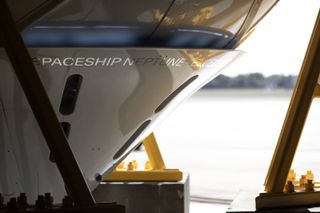
The windows are made from the same material as fighter jet canopies, but with so many of them, solar gain was potentially a massive problem. A special coating reduces glare and the capsule also has a full cooling system, making its two semi-circular lounges a pleasant place to be. ‘You need to be seated for take-off and landing,’ Window explains, ‘then you can walk around and you’re not limited to one particular field of view.’
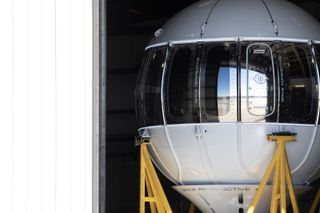
The chair designs in particular had to balance comfort with safety. ‘It was a real challenge,’ the designer says, ‘they’re essentially a piece of safety equipment with a five-point harness.’ In addition, materials are dark and non-reflective to minimise distractions, while the on-board bathroom probably has the best view of any bathroom in the world.
Safety systems include two sets of military grade parachutes on the capsule, should the balloon fail (although Poynter says the technology has flown over 1,000 times ‘without incident’), and as well as FAA regulations, the firm has to get all the necessary approvals from the US Coast Guard as well.
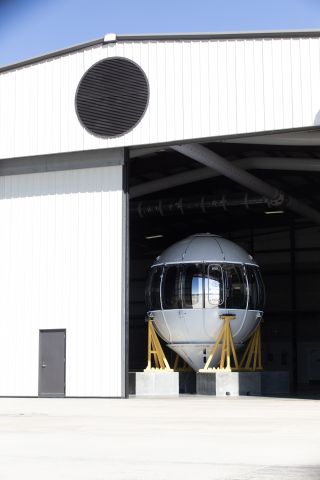
The latter is because the balloon will be launched from a ship, MS Voyager. ‘It gives us a very broad operating window – we can go all over the world,’ says Poynter. Re-entry and landing will also be into the ocean, with a nimble support vessel ready and waiting to crane the Neptune capsule on board. First flights are planned to soar high above Florida. ‘Looking down on something you recognise like the Florida Keys is important,’ says Poynter, who says the view should extend to an 800 mile diameter portion of the planet. ‘You could see the entirety of the UK, for example, or the length of Italy, or even the Caribbean,’ she says.
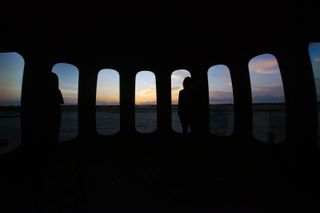
One can’t help but think that certain people – politicians, world leaders, captains of industry – would benefit greatly from a sobering dose of the overview effect. However, at $125,000 a ticket, the Space Perspective experience is a pricey proposition for the rest of us. Nevertheless, the company already has 1,800 eager passengers on its books, suggesting that a true window on the world will always be highly desirable.
Space Perspective, SpacePerspective.com, @theSpacePerspective
Jonathan Bell has written for Wallpaper* magazine since 1999, covering everything from architecture and transport design to books, tech and graphic design. He is now the magazine’s Transport and Technology Editor. Jonathan has written and edited 15 books, including Concept Car Design, 21st Century House, and The New Modern House. He is also the host of Wallpaper’s first podcast.
-
 ICON 4x4 goes EV, giving their classic Bronco-based restomod an electric twist
ICON 4x4 goes EV, giving their classic Bronco-based restomod an electric twistThe EV Bronco is ICON 4x4’s first foray into electrifying its range of bespoke vintage off-roaders and SUVs
By Jonathan Bell Published
-
 ‘Dressed to Impress’ captures the vivid world of everyday fashion in the 1950s and 1960s
‘Dressed to Impress’ captures the vivid world of everyday fashion in the 1950s and 1960sA new photography book from The Anonymous Project showcases its subjects when they’re dressed for best, posing for events and celebrations unknown
By Jonathan Bell Published
-
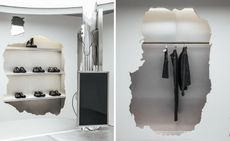 Inside Camperlab’s Harry Nuriev-designed Paris store, a dramatic exercise in contrast
Inside Camperlab’s Harry Nuriev-designed Paris store, a dramatic exercise in contrastThe Crosby Studios founder tells Wallpaper* the story behind his new store design for Mallorcan shoe brand Camperlab, which centres on an interplay between ‘crushed concrete’ and gleaming industrial design
By Jack Moss Published